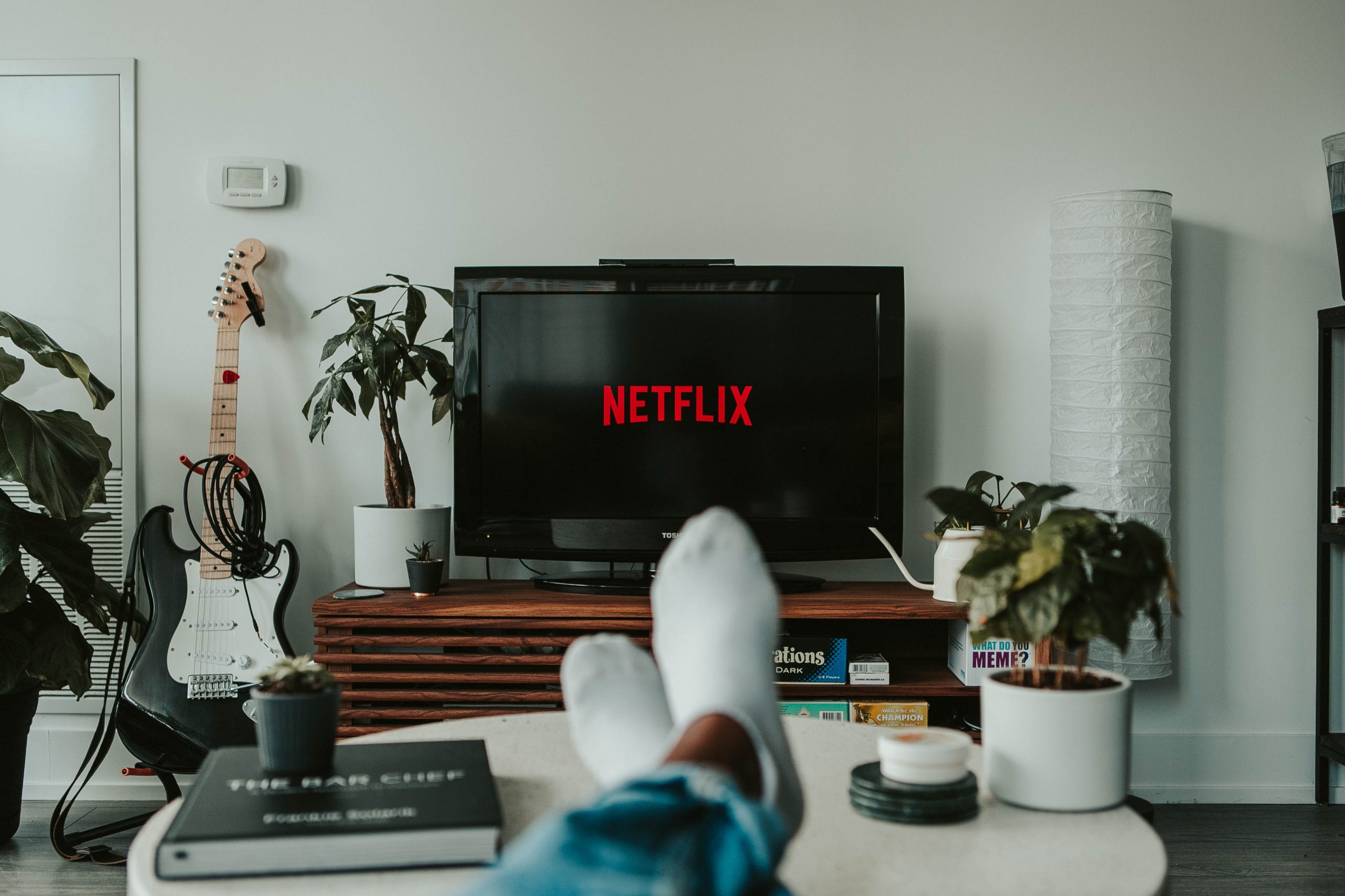
Mollie Sivaram/Unsplash
This story appears in the December 2020 issue of Television Asia Plus.
OTT media viewership has experienced a significant boost over the past year. The rising adoption of such platforms has partially been attributed to broader market trends but also users who have been enjoying “all-you-can-eat” entertainment packages during the extended lockdown caused by COVID-19.
In the Asia Pacific, digital consumption has seen a spike in demand and it’s expected that there will be 97.8 million Netflix users in the region by the end of the year. Experts expect a similar increase in subscriptions across many of the region’s top-tier OTT services.
The many faces of video on demand (VOD)
Streaming platforms generally use one of the following monetisation models: Subscription VOD (SVOD) such as Amazon Prime or Netflix, Advertising VOD (AVOD) such as MX Player, or a Hybrid model which combines a free tier (generally AVOD) with a premium tier that is SVOD and allows consumers to opt out of (or see fewer) ads, such as iFlix or SonyLiv.
Another popular model is transactional VOD (TVOD) which allows users to pay for content on an à la carte basis. TVOD allows consumers to pay a fee to access a content title for a set period. Premium VOD (PVOD) takes the rental model to another level by providing audiences with an opportunity to watch the latest cinema releases from the comfort of their home. Over the past year, studios have been experimenting with PVOD due to the effect the pandemic has had on the regular theatrical releases.
The challenge for OTT platforms is finding the right balance to satisfy their customers. There isn’t a one-size-fits-all option and experience tells us that providers that approach their monetisation models with an open mind and a nimble posture stand a greater chance of weathering the streaming wars.
Why taking a hyper-local approach is important
Audiences and streaming providers would agree that one-size-fits-all TV packages—such as those we see with traditional Pay TV packages—are no longer fit for purpose in a digital age. OTT providers must define the strategy that best suits their brand and create customised offerings that will delight their consumers.
In the Asia Pacific, local content is perhaps one of the greatest differentiators. It’s easy to buy into the hype of the latest season of Netflix’s The Crown that has just arrived for international audiences. But with a potential 4.1 billion viewers, the majority of the global audience is Asian. They are collectively searching for content that is more relevant to them and that incorporates local stories, traditions, and celebrities.
Savvy OTT providers are carefully assessing trends and consumer behaviours in different parts of the world and taking a hyper-regional focus when it comes to go-to-market strategies. In India, Netflix has experimented with mobile-only plans, while in France, they launched a linear channel on their OTT. Such considerations are mandatory for services that aspire to compete not just globally but regionally. There is no one-size-fits-all approach and this probably truer in the Asia Pacific than anywhere else in the world. The region is highly diverse, with many notable differences between countries, including culture, the standard of living, and attitude towards piracy.
Regionalised user experiences and monetisation models empower local service providers to go toe to toe with the global players. This realisation is increasing investment in creating localised content that focuses on winning consumers’ hearts and minds across Asia.
Big data, AI, and the personalisation of everything
The discovery of your next favourite book, album, TV show, or movie will probably come via AI-based personalised recommendations. In the movie Moneyball, Brad Pitt taught us much more about the future of business strategy than many realise. Data-driven decision making has entered the mainstream and will also play a critical role in targeting new, returning, and loyal audiences.
Technology enables providers to collect vast quantities of viewing data. It’s not just the type of content and preferred genres they enjoy, but the average viewing time of each piece of content, but also how and when consumers like to pay. The combination of AI and big data provides a sort of “secret sauce” that helps to reveal real-time audience insights. It’s these insights that help provide a hyper-customised service offering.
Technology will continue to play a critical role in achieving business goals and KPIs. We have much more granular visibility into the entire customer lifecycle in terms of billing and revenue optimisation. This visibility is what will allow providers to tweak their offerings and user journeys.
Finding the right balance in a crowded market
The increase of OTT media viewership has opened the door for more players to enter the space. Investors, content owners, and traditional communications providers want a slice of the pie and are willing to make investments in technology stacks, teams, and original content catalogs. The reason they’re doing this is to ensure they set themselves up for the future and to pivot their business models to the new world we find ourselves in where the traditional methods of creating and distributing content have been radically disrupted. Faced with so many challenges, how can streaming platforms take advantage, attract, and retain viewers by providing them with the perfect package?
To retain their customers’ attention, OTT platforms need to do a few things and do them well. First, and perhaps most importantly, they need to have a catalogue that is regularly updated. Fresh new content, as well as cultural-related or themed holiday content, will get people to come back for more. The reason people keep going back to social media platforms is partly because of the steady stream of content and OTT streaming apps are no different as both are competing for the user’s attention. In the case of SVOD services, providers need to have a content strategy that keeps users engaged and coming back for more to justify their monthly price tag.
For other platforms that are experimenting outside the traditional monthly SVOD subscription, it’s still important to offer the right value in exchange for the user’s attention. The key is experimenting with different things such as ease of use, the cost to the consumer, and content come into play. Some users might be inclined to trade their hard-earned dollars for premium content as part of an SVOD or PVOD offering, but those same users may not be so inclined to other content they deem less valuable. This is where an honest look at the value being offered vis-a-vis the content lineup makes sense as it helps shape a provider’s go to market strategy.
Platforms are still finding the perfect balance between available options such as AVOD, TVOD, SVOD, and PVOD. Others are also struggling to find the perfect mix of original content versus licensed TV shows and movies that fans love. With Mulan, for example, the global pandemic prevented a theatrical release and stopped the success that Disney was predicting. But Disney pivoted to release the movie as PVOD on the network’s Disney+ platform.
The price is right
Pay-TV consumers are beginning to realise that cutting the cord is more expensive than they initially thought it would be. A growing list of subscriptions means that many will likely be looking to cut back on the ever-increasing list of streaming services from their monthly bills. Streaming services can leverage best-in-breed technology and bundle services together as part of a customised service offering. This offers opportunities to streamline the billing process and adapt their pricing to different market segments.
A great example is Jio, an Indian telecommunication company that launched their TV bundle offer, Jio Fiber. When their consumers choose this option, they get access to a large range of streaming services such as Netflix, Sony Liv, Disney+, and many more.
The revolution will not be televised
As the number of OTT streaming service subscribers rise, providers must differentiate themselves to attract new customers and personalise their offerings to retain their audience. This is why finding the perfect balance of service offerings is crucial for success. In the Asia Pacific, we expect to see an increase in local content in the OTT media space coupled with compelling bundles that offer the right value to price ratio. It’s time to retire the concept of a one size fits all entertainment package. For OTT providers, there is an opportunity to adjust content accordingly to ensure that it is relevant to individual audiences’ viewing preferences.
About the author
Paolo has 20 years of expertise and knowledge from the media and telco industries as well as a proven ability to forge long-term strategic partnerships with large and complex accounts both in Asia and globally. Before joining Evergent, Paolo was the Head of Account Management for Asia at Brightcove where he was responsible for customer success and expanding the Asia business across Brightcove’s portfolio of global broadcasters, publishers, and digital native customers. He has also held senior sales and professional services roles at Quickplay Media and Subex Ltd.








